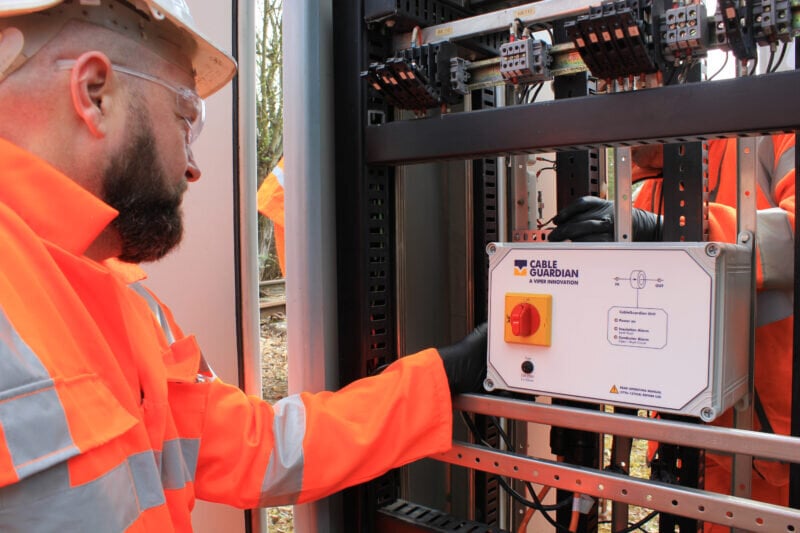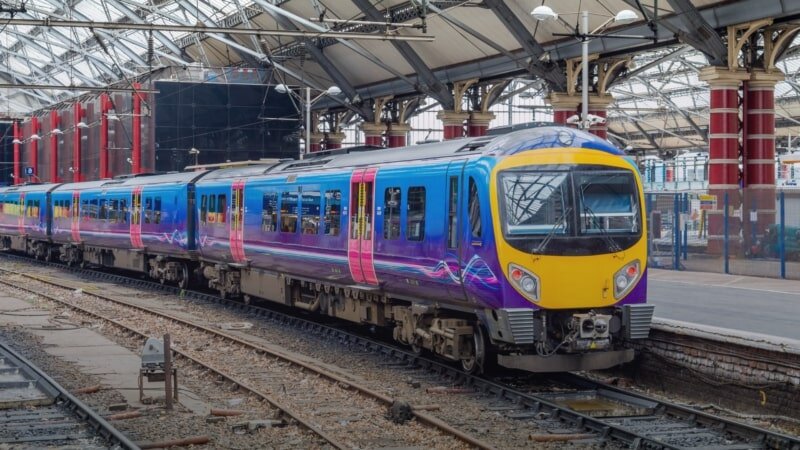Keeping Trains Running: How Cableguardian Protects Railways from Extreme Weather
Viper Innovations’ CableGuardian’s continuous monitoring detects and alerts cable weaknesses and gives information about outages, particularly those that are made worse by extreme weather.

Water damage from flooding, extreme temperatures, high winds and electrical storms are a real danger to signalling power systems.
Network Rail warns that increasing instances of extreme weather may exceed ‘critical coping thresholds.’ As part of CP7, Network Rail has stated it will invest £2.8 billion in core renewals, maintenance and technology to deliver weather resilience benefits, including adaptation plans developed by and for regional networks. Due to budget constraints, however, Network Rail must prioritise where it invests.
What risks do weather events create, and how can signalling power systems become more weather-resilient? This article explores the answers to these questions.
The Impact of Weather Events on Rail Infrastructure
To understand why such investments are crucial, it is important to explore the impact of extreme weather on rail infrastructure designed before climate change was the issue that it is today. Signalling power systems are impacted in different ways. For example, by:
- Excess precipitation – flooding and water ingress can allow water to seep into principal supply points (PSPs), functional supply points (FSPs) and cables, resulting in insulation failure. In the worst-case scenario, a sudden deluge or continued ground softening can lead to landslides and the structural failure of trackside elements.
- Extreme heat or cold – extreme heat can cause cable insulation to degrade while sub-zero temperatures can make materials brittle and more prone to damage.
- Lightning strikes – these can cause significant surges that damage trackside signalling equipment and PSPs.
Such events can prove costly. If there is prolonged service disruption, Schedule 8 payments fall to affected train operating companies (TOCs). During the 2022 heatwave, losses reached £30 million in one week alone.
Despite the urgency to locate and fix faults, the still-in-use traditional method of manual inspection is time-consuming and dependent on crew availability. It can also be hard for maintenance engineers to inspect and fix faults during extreme weather events, leading to higher costs and longer disruption times.
How CableGuardian Supports a Weather-Resilient Rail System

Viper Innovations’ CableGuardian’s continuous monitoring detects and alerts cable weaknesses and gives information about outages, particularly those that are made worse by extreme weather. Using Viper Innovations’ V-LIM technology – developed for the offshore oil and gas industry to monitor the critical infrastructure of production control systems – the system monitors insulation resistance, voltage and current, so action can be taken before severe weather impacts signalling power.
Faults and failures caused by extreme weather can be remedied proactively, reducing the risk of costly Schedule 8 payments. For example, CableGuardian supports:
Pre-emptive Monitoring and Efficient Resource Allocation
CableGuardian tracks real-time cable health to pinpoint vulnerable areas so maintenance teams can prioritise high-risk zones and allocate resources efficiently, preventing weather-triggered failures such as degraded insulation.
Faster Fault Identification
Traditional inspection methods are manual, inefficient and prone to delays due to continuing poor weather and safety concerns. CableGuardian streamlines this process and minimises downtime, as fault identification and repairs are based on sensor data.
Schedule 8 Payment Reductions
A major signalling outage to one of the UK’s busiest stations incurred Schedule 8 payments in excess of £1 million. By reducing or eliminating the risk of faults and, therefore, service disruption, CableGuardian helps prevent these costs.
Increased Health and Safety
Remote monitoring reduces the need for manual inspections, minimising exposure to hazardous conditions and night driving, which can be more perilous during extreme weather events.
Non-intrusive Monitoring
Unlike traditional methods that require systems to be switched off and partially disconnected for testing, CableGuardian offers 24/7 online monitoring. This eliminates the need for invasive inspections, allowing systems to remain operational and reducing the risk of introducing faults during reconnection.
Reduced Risk of Equipment Damage
Manual testing can cause damage to cables and other system components. CableGuardian mitigates this risk by continuously monitoring without physical interference, preserving the integrity of the infrastructure.
Minimised Maintenance Disruption
Traditional testing is time-consuming and challenging to conduct, particularly under tight schedules and limited access. CableGuardian simplifies this process by providing real-time data, allowing maintenance teams to focus on addressing issues rather than extensive diagnostics.
Supporting CP7: Resilience, Reliability and Resource Efficiency
CableGuardian’s capabilities align with CP7’s goals for maintenance and resilience in the face of climate change and more extreme weather events. The system is preventive, mitigating weather impacts and supporting rail reliability, safety and efficiency. By removing the need for manual inspections, reducing downtime and service disruption and ensuring targeted resource allocation, CableGuardian empowers rail asset managers to overcome the increasing challenges posed by extreme weather while prioritising resource efficiency.
Learn more about Viper Innovation’s CableGuadian.
www.viperinnovations.com

